A Behind The Scenes Look At Processing The Bad Guys
“He’s running!” A bag of cocaine is tossed to the ground along with a small handgun. The bad guy takes off. He’s prepared for the run—tennis shoes, loose clothing, and he has a small head start…and he’s younger. Much younger. A kid. It’s difficult to chase someone, especially while wearing a suit and dress shoes, but that’s the nature of the beast. So detectives don’t complain, they just do it. Sure, they’ll hear the teasing from the uniforms, later… “Who taught you how to run, your grandma?” Slowest chase I’ve ever seen.” “You got weights tied to your ankles?” “You put your feet on backward this morning?”
In spite of the awkward, wingtip-clad feet, the investigator almost always catches the thug, wrestles to get the cuffs on his sweaty wrists, and stands him upright for the walk back to the unmarked police car. Then it’s back to the police station for processing, which includes mugshot photos, fingerprinting, and normally the the prisoner’s phone call to his wife, mother, attorney, or bail bondsman (sometimes, there’s a list of local bail/bond folks beside the jail/lockup phone).
Signs like this one are reminders for the officers who sometimes have a tendency to forget the details.
Officers must lock their weapons inside a lockbox before entering the booking area. This is to prevent prisoners from gaining control of a weapon. The officer locks the box and takes the key with him.
The arrestees are often seated and handcuffed to benches while waiting for processing. Notice the handcuffs attached to the second rail from the left.
Prisoners are fingerprinted for both in-house records and for the FBI national database, AFIS. Many departments now use automated fingerprinting devices, such as this LiveScan terminal.
Capturing a suspect’s fingerprints on a LiveScan terminal
The prints are transferred to a computer terminal where the suspect’s personal information is entered.
Digital images replace ten-print cards (cards used for capturing inked fingerprints).
Some departments still use the old ink and ten-print card method of fingerprinting (LiveScan terminals are expensive).
Then, with the processing complete, prisoners are placed into a holding cell until they post bond, or until they are transferred to the county jail to await their first court appearance, usually an arraignment.
Police department holding cell. Those of you who attended the Writers’ Police Academy last year may remember seeing this cell as part of your police department tour.
Steel plates mounted on the walls serve as beds
Combination sink and toilet
In-cell telephone
After processing, the cycle begins again…

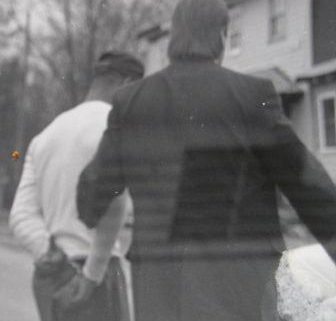
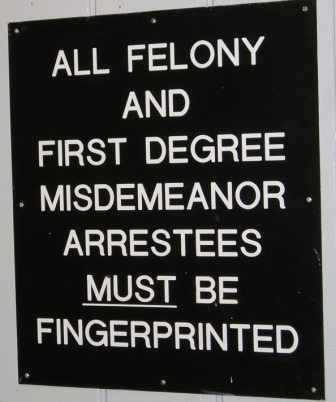
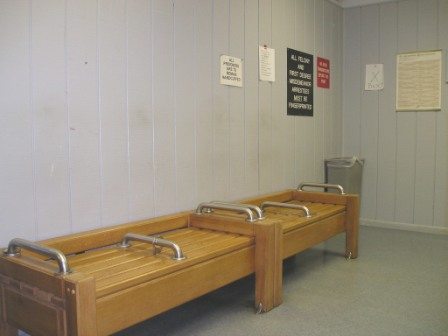
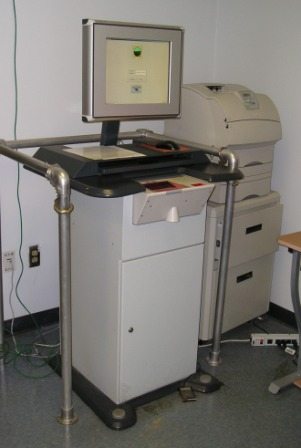

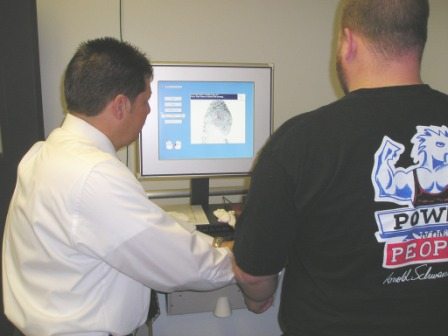
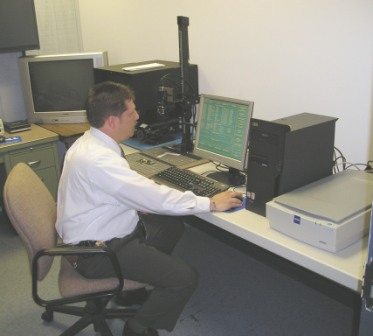

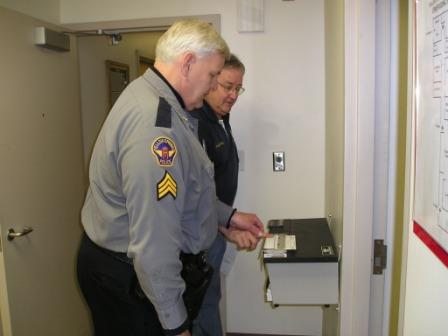
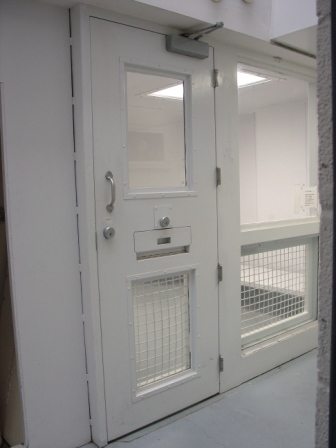
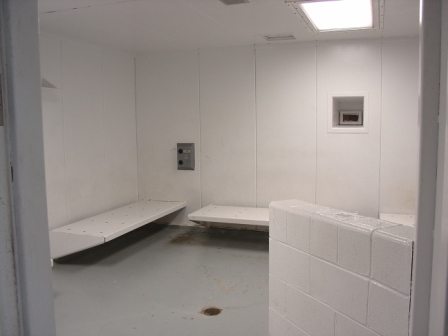
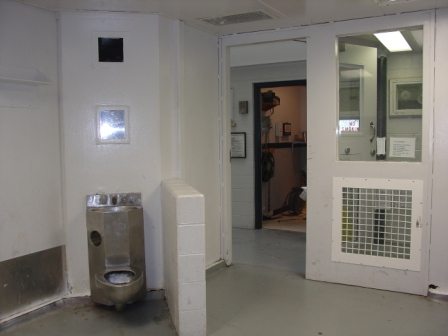



Hmm…looks kind of familiar, huh?
Hi, Lee.
Who’s the suit in the shaggy hair in the first picture?
Any idea?
We did a tour of the police department with Cub Scouts MANY years ago & they had one of the LiveScan terminals. Those are pretty cool.
I agree, there is just something kind of ‘icky’ about that sink-toilet combination. Not to mention the steel plates for beds. Yeah, I think I’ll just stay out of jail.
“Combination sink and toilet” – just one of the many reasons I never want to be arrested.